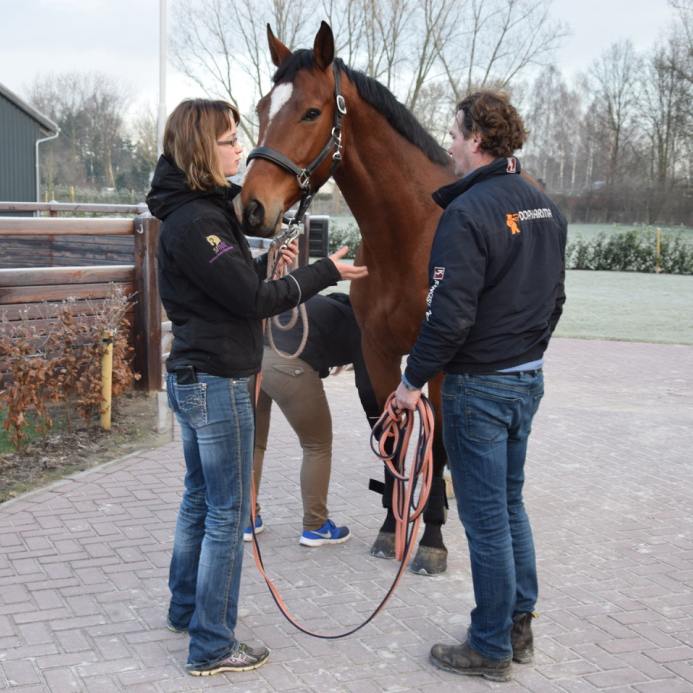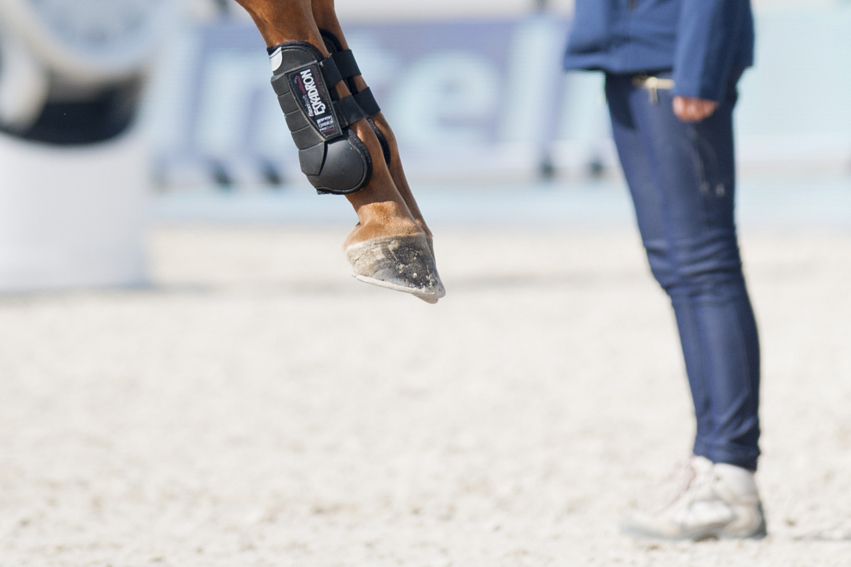
Veterinary Care of the Sporthorse
All horses are exposed from the beginning to the end of their athletic career to many circumstances that can negatively influence their general well being. Examples may be heavy training, competitions, transport, nutrition and so on. Luckily, for a healthy and long standing career there are many measures that can be taken.
The purchase examination
The purchase of a (sport) horse is the ideal time to obtain as much information as possible including history, the current management and the current health of the horse. For the last component, an excellent clinical examination is required complimented by comprehensive imaging (radiographs, ultrasound and in some cases scintigraphy and MRI), endoscopy and a blood profile/test. With all this information, we try to gauge the risk as well as give advice about potential health problems that may arise in the future. When the decision is made to buy the horse, all the information gathered at the purchase examination is then analyzed and used as the starting point for the new and optimal management and training regime.
Fitness of the horse

Unfortunately tendons and ligaments respond very slowly to training; it can take months to years for these to have been adjusted to the work load of the horse. Tendons and ligaments are also the tissues with the longest recovery period after injury. Therefore it is very important to prevent tendon and ligament injury. Preventative measures using UTC scanning can monitor the tendons and ligaments. Read more about UTC (LINK)
Bones respond relatively quickly to training and increasing work load; at places where there are increased forces, the bone responds by becoming denser and stronger. The quality of the cartilage in the joint needs to be carefully protected. If there is an injury to the cartilage, it has minimal capacity to heal. To load the cartilage properly, it is important to keep in mind the horse’s conformation and possible conformational defects. This can be optimized by careful and individualized shoeing and trimming of the feet.
Identification of subclinical problems
To identify problems in a timely manner, it is important to “know” the horse. Input from the owner, trainer, rider, veterinarian, physiotherapists, farrier and dentist all contributes to a multidisciplinary approach which is necessary to help identifying problems sooner rather than later.
Training of the equine athlete involves having the horse frequently examined and evaluated. A good clinical examination (in hand and under saddle), palpation, and range of motion tests can be accompanied by imaging techniques such as UTC and ultrasonography. If your horse does not feel right or isn’t performing as expected, please do not hesitate to contact us.
Management of subclinical problems
Recognizing problems early on, often means that the chances at healing and complete recovery are better. Besides veterinary care (ie injection, shockwave therapy, laser therapy, personalized revalidation program) a multidisciplinary approach is highly recommended. We often collaborate with both physiotherapists and farriers.
Conclusion
Naturally we all take care of our horse’s to the best of our abilities, but there are always risk factors present that may result in injury. Veterinary management is a must for those wanting to responsibly train and compete their equine athletes. For more information, please do not hesitate to contact us.



